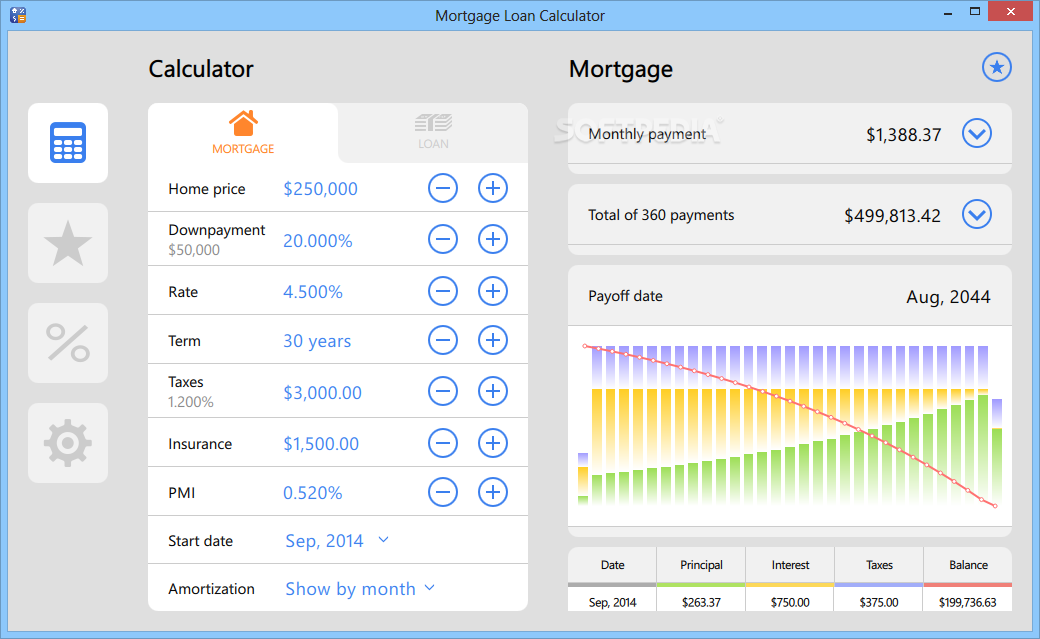

In other words, the purchase price of a house should equal the total amount of the mortgage loan and the down payment. When purchasing a home, after a down payment is paid by a home-buyer, any remaining balance will be amortized as a mortgage loan that must be fulfilled by the buyer. It is highly recommended that you obtain loan pre-approval when shopping for a home, so that you can put in an offer and subsequently lock in the rate for your home loan.Related Mortgage Calculator | House Affordability CalculatorĪ down payment is the upfront portion of a payment that is often required to finalize the purchase of items that are typically more expensive, such as a home or a car.Borrowers with higher credit scores may qualify for a lower rate, because the risk that they may default on the loan is considered to be lower. If you have a poor credit score, you may only qualify for a higher mortgage rate, because a lender can recoup most of the loan amount at a faster rate if the rate is higher. Your credit score is another important factor in determining your mortgage rate. Your location affects your mortgage rate, and may vary from 0.25% to 0.5% between lenders on any given day, depending on local laws, the competition for lenders, fees, and closing costs. In addition to the interest rate, several other factors determine the specific mortgage rate that a buyer will qualify for.Mortgage rates are directly related to interest rates, and a rise or fall in interest rates will result in a rise or fall in mortgage rates.

Rates are fixed or variable, meaning that they either remain the same for the duration of the mortgage or vary depending on a benchmark interest rate. Lenders determine the mortgage rates in most cases. Mortgage rates are the rate of interest that is charged on a mortgage.


This range will help you figure out what you can afford and also helps lenders determine your approval status for a mortgage loan. Generally, DTI is displayed as a range of 20% to 50% and reflects an estimate of the top and bottom of your affordability.Monthly debt / gross monthly income = DTI %.Your DTI is estimated by dividing your total monthly debt by your gross monthly income.It is very important to provide your monthly debt and annual income amounts accurately to estimate your DTI. This does not include mortgage payments, rent or regular expenses like food, transportation and utilities. Your monthly debt is the sum total of all your recurring payments such as personal loans, auto loans, student loans, credit card payments, child support, and any other expenses that you would find on your credit report. Debt-to-Income (DTI) identifies the percentage of your gross monthly income (the amount you earn before tax) that goes towards your monthly debts.


 0 kommentar(er)
0 kommentar(er)
